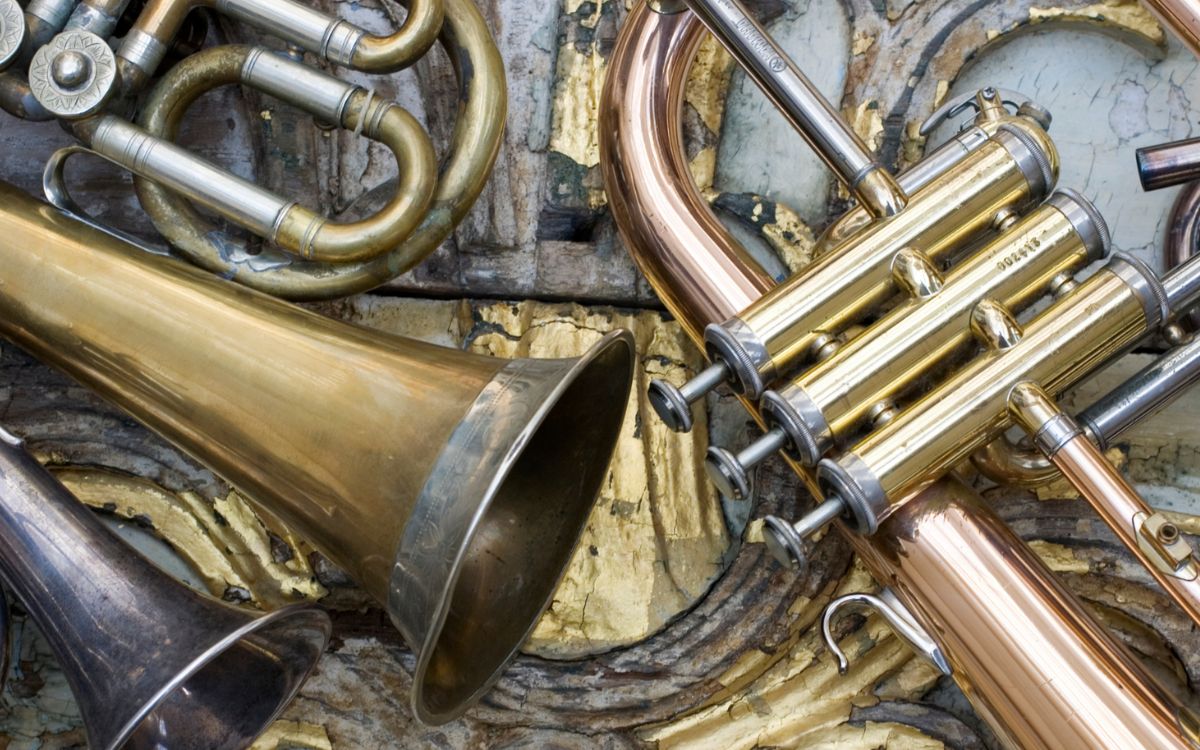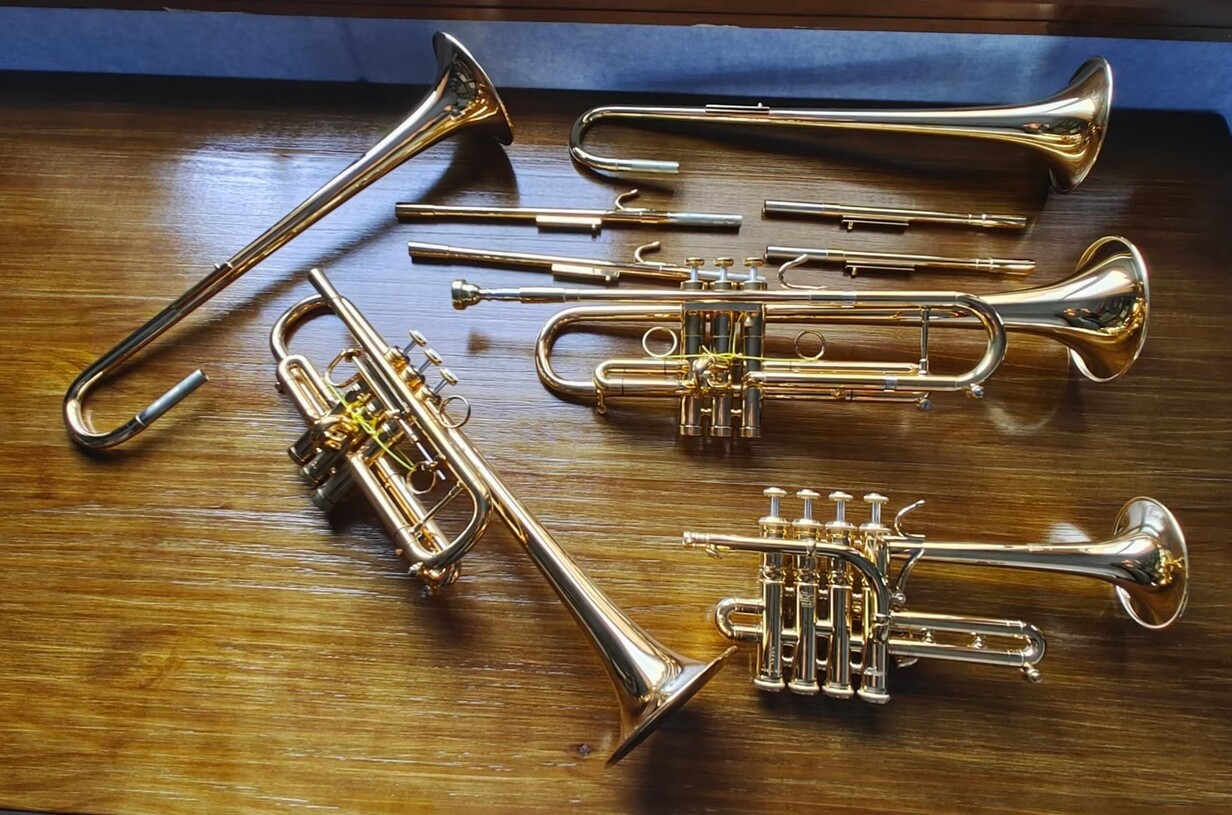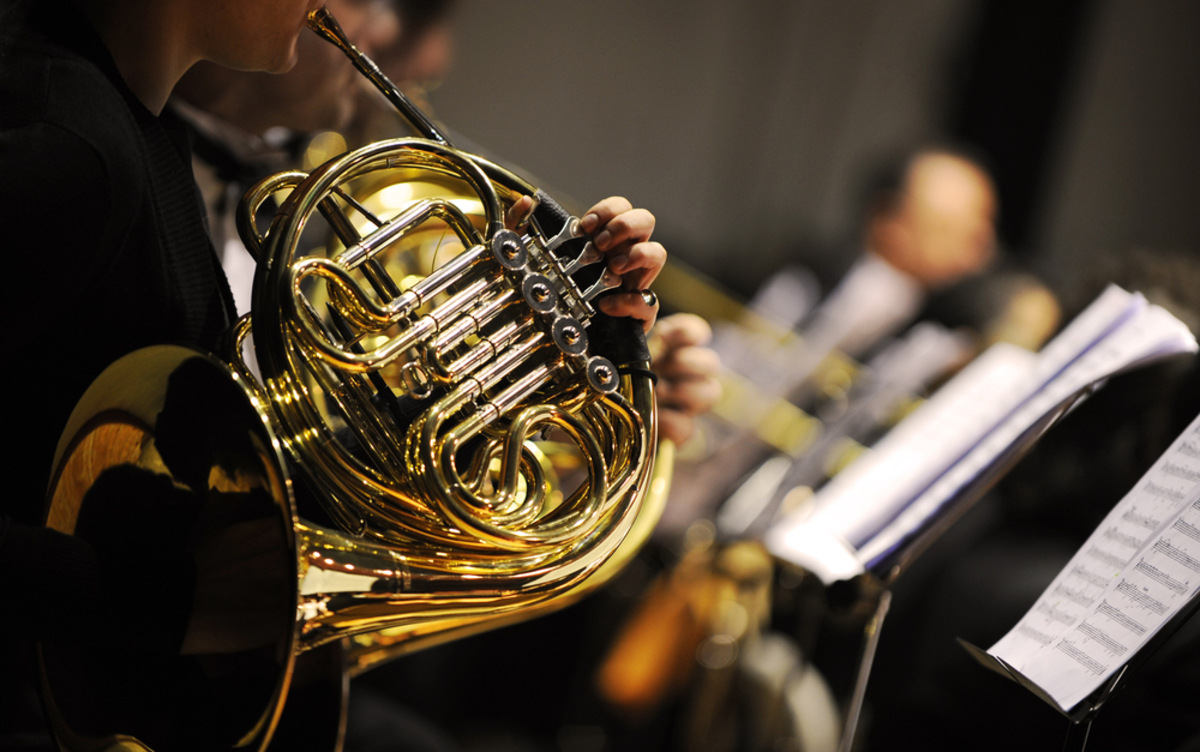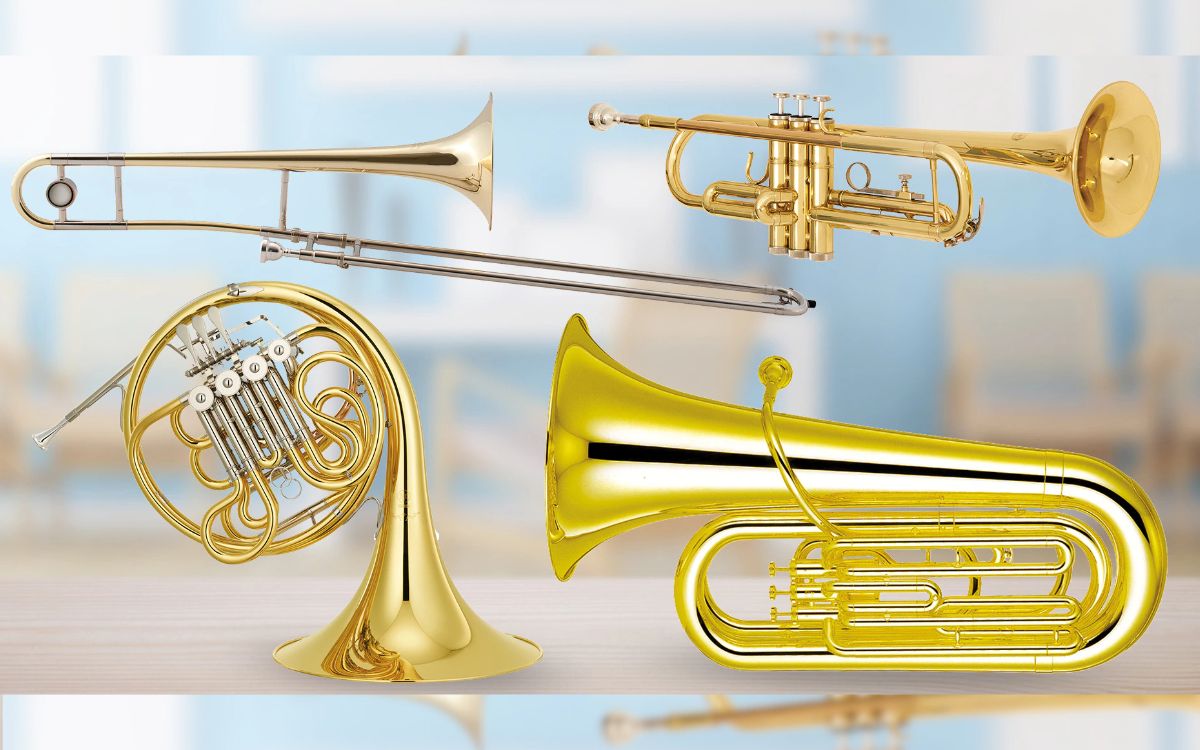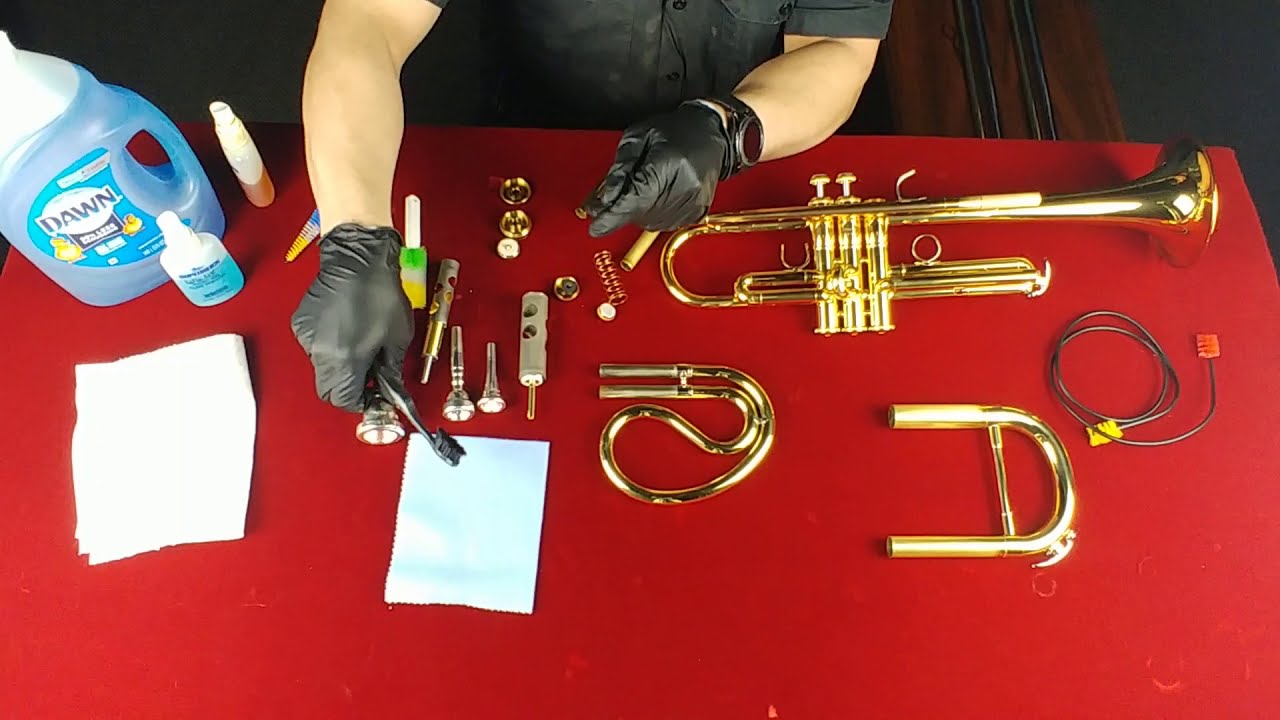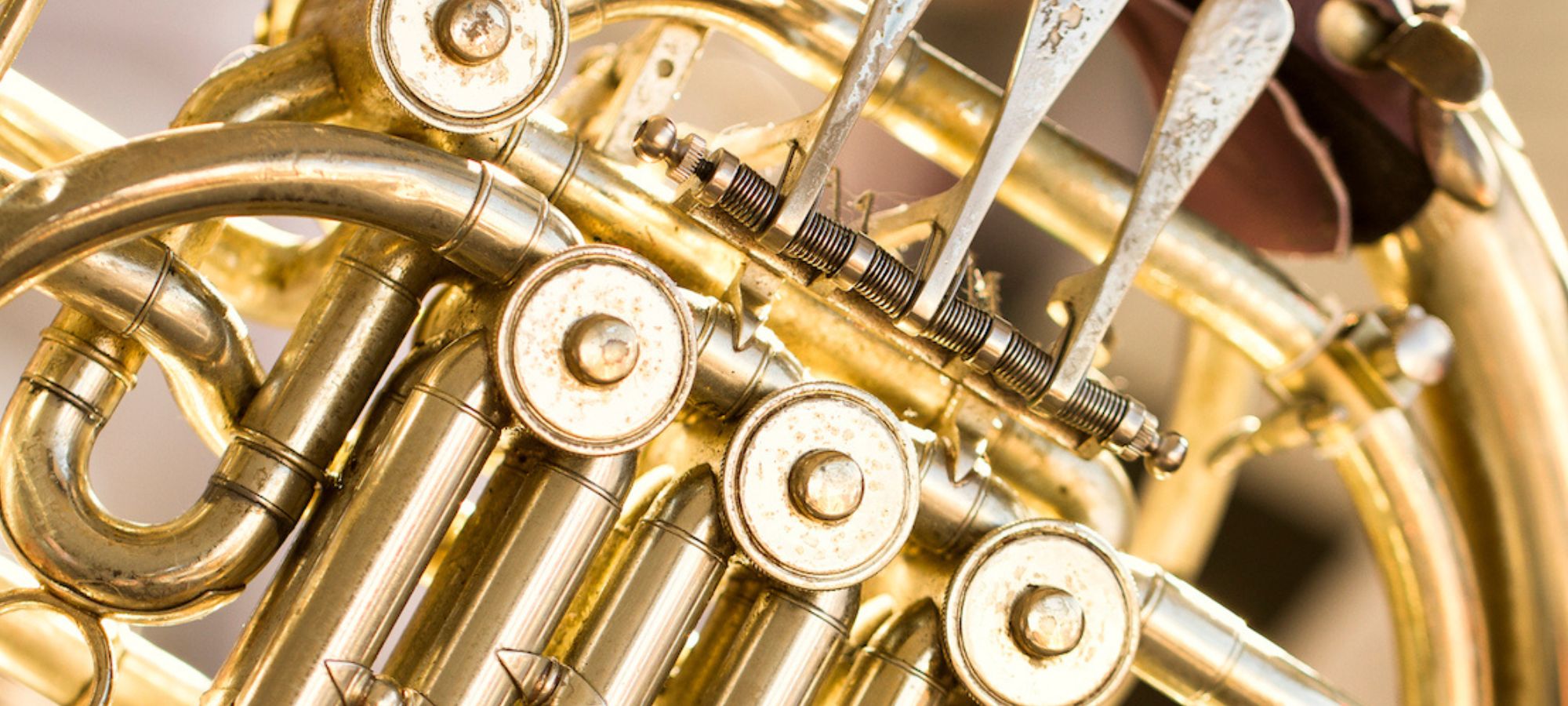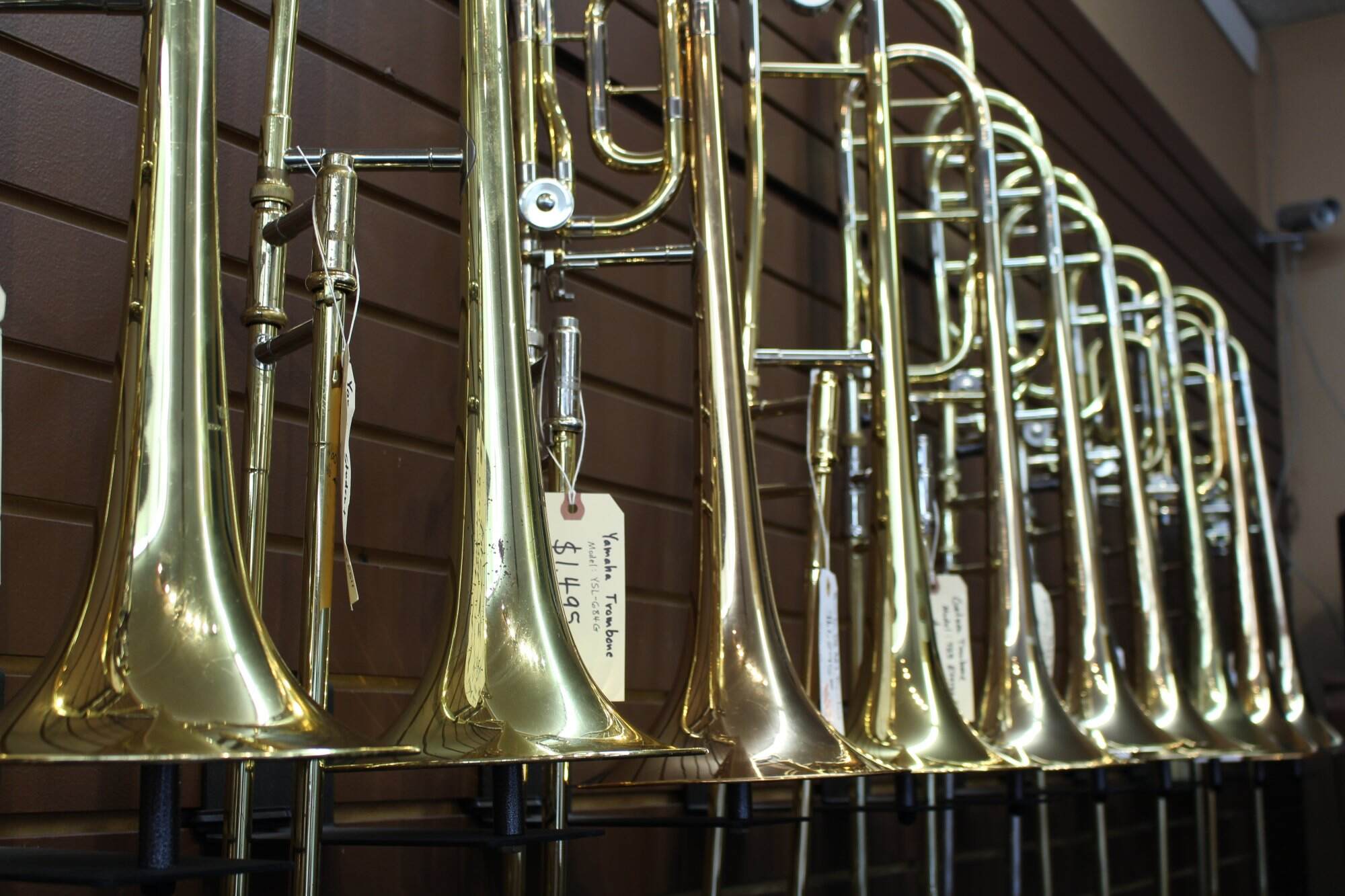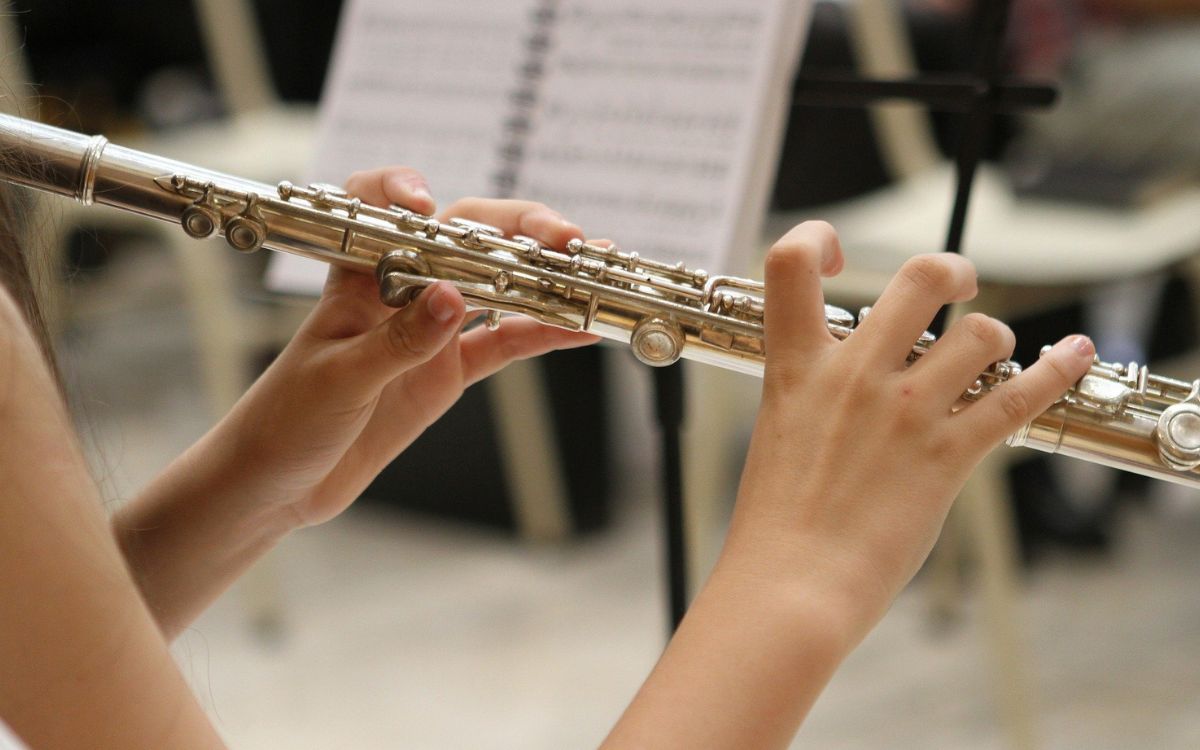Home>Instruments>Brass Instruments>How Did Brass Instruments Influence Jazz


Brass Instruments
How Did Brass Instruments Influence Jazz
Modified: January 22, 2024
Discover how brass instruments shaped the evolution of jazz, from their iconic solos to their defining role in the big band era. Learn why brass is the heartbeat of jazz music.
(Many of the links in this article redirect to a specific reviewed product. Your purchase of these products through affiliate links helps to generate commission for AudioLover.com, at no extra cost. Learn more)
Table of Contents
Introduction
Brass instruments have played a significant role in shaping the sound and evolution of jazz music. From the early days of jazz to the modern fusion and experimental styles, brass instruments have been instrumental in creating the distinct sound and energy that jazz is known for.
Jazz is a genre that originated in the late 19th and early 20th centuries, primarily in African American communities in the United States. It is a genre known for its improvisation, syncopated rhythms, and rich harmonic progressions. Brass instruments, such as trumpets, trombones, and saxophones, quickly became an integral part of the jazz ensemble, adding a powerful, expressive, and dynamic element to the music.
As jazz developed, so did the role of brass instruments within the genre. From the early days of New Orleans-style jazz to the swing era of big bands, the evolution of brass sections in jazz has been fascinating to witness. These instruments brought a new level of energy, virtuosity, and complexity to the music, allowing jazz musicians to push the boundaries of what was possible.
In this article, we will explore the influence of brass instruments in jazz, from the early pioneers to the modern-day explorations. We will delve into the impact of legendary musicians like Louis Armstrong, the development of brass sections in big band jazz, the role of brass instruments in bebop, the influence of Latin jazz on the brass sound, and the fusion movement that brought new experimentation with brass instruments in jazz.
So sit back, grab your favorite brass instrument, and join us on a journey through the fascinating world of brass instruments in jazz.
Early Brass Instruments in Jazz
In the early days of jazz, brass instruments played a crucial role in establishing the foundation of the genre. One of the earliest brass instruments to be featured prominently in jazz was the cornet. Developed in the mid-19th century, the cornet had a mellow tone and was capable of playing expressive melodies. It became a favorite among early jazz musicians, who used it to lead and improvise within their ensembles.
Another essential brass instrument in early jazz was the trombone. Due to its slide mechanism, the trombone allowed for smooth glissandos, creating a unique and soulful sound. Jazz trombonists like Kid Ory and Jack Teagarden played a pivotal role in defining the style of the instrument within the genre.
Of course, we can’t talk about early brass instruments in jazz without mentioning the trumpet. The trumpet, with its bright and piercing sound, became one of the most iconic instruments in jazz history. The legendary Louis Armstrong, known as Satchmo, was a virtuoso trumpeter who revolutionized the role of the instrument in jazz. His powerful and innovative playing techniques, including his ability to create melodic improvisations, set a new standard for trumpet players across the genre.
The saxophone, although not a traditional brass instrument, also played a significant role in early jazz. With its versatility and expressive qualities, the saxophone found its way into the jazz ensemble, adding a unique timbre to the overall sound. Charlie Parker, known as Bird, and Coleman Hawkins were pioneers in incorporating the saxophone into the jazz language.
These early brass instruments in jazz laid the foundation for the expressive and improvisational nature of the genre. They provided a platform for musicians to showcase their virtuosity and creativity, setting the stage for the development of jazz as we know it today.
Influence of Louis Armstrong
When discussing the influence of brass instruments in jazz, it is impossible to overlook the impact of Louis Armstrong. Known as the “Father of Jazz,” Armstrong revolutionized the way the trumpet was played and forever changed the course of jazz music.
Armstrong’s virtuosic trumpet playing showcased his incredible technical skill, range, and control. He introduced groundbreaking techniques such as melodic improvisation, scat singing, and trumpet solos that pushed the boundaries of what was possible on the instrument. His innovative approach to jazz influenced countless musicians and set a new standard for trumpet players.
Beyond his technical abilities, Armstrong’s unique personality and charisma captivated audiences worldwide. His distinct gravelly voice, engaging stage presence, and infectious smile made him a beloved figure in the jazz community. Armstrong’s vocal interpretations of jazz standards, such as “What a Wonderful World” and “Hello, Dolly!,” demonstrated his ability to convey emotion and connect with listeners on a deep level.
In addition to his individual contributions, Armstrong’s collaborations with other jazz greats helped shape the course of the genre. His work with pianist Earl Hines and their recordings as the Louis Armstrong and Earl Hines Orchestra showcased their impeccable chemistry and became a blueprint for small group swing. Armstrong’s collaborations with other influential artists, such as Duke Ellington and Ella Fitzgerald, further solidified his status as a jazz icon.
Armstrong’s impact extended beyond his musical contributions. As one of the first prominent African American jazz musicians, he helped break down racial barriers in the music industry. His success paved the way for generations of Black musicians and inspired them to pursue their passion for jazz.
The influence of Louis Armstrong can still be felt in contemporary jazz. His innovative playing style, expressive interpretations, and undeniable charisma continue to inspire trumpet players and jazz musicians to this day. Armstrong’s legacy serves as a reminder of the power and influence that brass instruments have in shaping the sound and evolution of jazz music.
Development of Brass Sections in Big Band Jazz
One of the most significant developments in the evolution of jazz was the emergence of big band jazz. Big bands, also known as jazz orchestras, featured a larger ensemble with multiple brass sections, creating a powerful and dynamic sound.
In the early 1920s, bandleaders like Fletcher Henderson and Duke Ellington began experimenting with larger ensembles by adding more brass instruments to their bands. The brass sections often consisted of trumpets, trombones, and saxophones arranged in harmonized sections. This allowed for a rich blend of sound and a wide range of dynamics.
The addition of more brass instruments brought a new level of energy and complexity to jazz. The brass sections provided a strong foundation, playing the melody and providing rhythmic support. The trumpets added brightness and punch, while the trombones contributed with their rich and warm timbre. The saxophones added depth and versatility with their ability to function as both melodic and harmonic instruments.
One of the most influential big bands of the era was the Count Basie Orchestra. With arrangements by legendary figures like Eddie Durham and Buck Clayton, the Basie Orchestra showcased the power and precision of the brass sections. The interplay between the trumpets, trombones, and saxophones, as well as the intricate harmonies and syncopated rhythms, gave the band its signature sound.
The big band era reached its peak during the swing era of the 1930s and 1940s. Bands like the Benny Goodman Orchestra, the Glenn Miller Orchestra, and the Artie Shaw Orchestra dominated the airwaves and dance halls with their lively and infectious music. The brass sections in these big bands became renowned for their tight ensemble playing, dazzling solos, and exciting arrangements.
As jazz continued to evolve, the role of the brass sections in big bands changed. The bebop movement of the 1940s emphasized smaller group settings, shifting the focus away from large ensemble arrangements. However, big bands continued to thrive, adapting to new musical styles and incorporating modern elements into their sound.
Today, the tradition of big band jazz lives on with modern ensembles like the Lincoln Center Jazz Orchestra and the Maria Schneider Orchestra. These groups carry on the legacy of the brass sections in big band jazz, showcasing the power, versatility, and collective energy that these instruments bring to the genre.
The development of brass sections in big band jazz has been instrumental in shaping the sound and evolution of jazz. The dynamic interplay, powerful harmonies, and expressive solos of the brass instruments continue to captivate audiences and inspire generations of jazz musicians.
Bebop and the Role of Brass Instruments
The bebop movement of the 1940s marked a significant shift in the jazz landscape. This genre, characterized by complex harmonies, fast tempos, and intricate melodies, revolutionized jazz and transformed the role of brass instruments within the genre.
In bebop, the focus shifted to small group settings, with ensembles typically consisting of a rhythm section (piano, bass, drums) and a horn section (trumpet, saxophone). While brass instruments still played a crucial role, the emphasis was on individual virtuosity and improvisation rather than large brass sections found in big band jazz.
The trumpet was especially prominent in bebop, with influential figures such as Dizzy Gillespie and Clifford Brown pushing the boundaries of the instrument. Bebop trumpet players showcased their technical prowess through dazzling solos and intricate improvisations. They incorporated fast runs, intricate melodic lines, and advanced harmonic concepts, requiring a high level of skill and proficiency.
The saxophone also played a significant role in bebop. Players like Charlie Parker and Sonny Rollins took the instrument to new heights, with their lightning-fast improvisations and masterful command of harmonic complexities. Saxophonists in bebop were known for their virtuosic technique, agility, and ability to navigate complex chord progressions with ease.
While the role of brass instruments in bebop shifted towards smaller group settings, they still provided a vital foundation for the music. The trumpet and saxophone often took turns playing the melody and improvising, with the other instrument providing harmonic support and comping behind the soloist. This call-and-response dynamic created a sense of interplay and dialogue within the ensemble.
Bebop also brought new harmonic possibilities to brass instruments. Musicians experimented with complex chord progressions and extended harmonies, challenging traditional tonal structures. The exploration of these harmonic concepts allowed for greater freedom and creativity in improvisation, pushing the boundaries of what was considered possible on brass instruments.
Overall, bebop elevated the role of brass instruments to new heights. The virtuosic performances, advanced harmonies, and innovative improvisations showcased the versatility and expressive capabilities of the trumpet and saxophone. Although brass sections may have taken a backseat in bebop, the individual brilliance of these instruments left an indelible mark on the genre, influencing generations of jazz musicians to come.
Latin Jazz and the Brass Sound
Latin jazz is a genre that emerged in the United States in the mid-20th century, combining the rhythmic elements of Afro-Cuban music with the improvisation and harmony of jazz. Brass instruments play a crucial role in Latin jazz, adding a vibrant, energetic, and distinct sound to the genre.
Trumpets and trombones take center stage in Latin jazz, often performing melodic lines with embellishments and improvisations that reflect the rhythmic intricacies of Afro-Cuban music. The trumpet, with its bright and piercing sound, brings a sense of excitement and flair, while the trombone adds depth and richness with its sliding tones and expressive qualities.
In Latin jazz, brass sections often interweave with percussion instruments such as congas, bongos, and timbales, creating complex rhythmic patterns known as montunos. These syncopated rhythms provide a lively and infectious groove that is characteristic of Latin jazz. The interaction between the brass section and the percussion creates a captivating musical dialogue, enhancing the overall rhythmic complexity and energy of the music.
One of the pioneers of Latin jazz was trumpeter and bandleader Dizzy Gillespie. With his groundbreaking collaborations with Cuban percussionist Chano Pozo, Gillespie fused Afro-Cuban rhythms with bebop, popularizing the genre and bringing the brass sound to the forefront. His compositions like “Manteca” and “A Night in Tunisia” perfectly exemplify the marriage of brass instrumentation and Latin rhythms.
Other notable figures in Latin jazz, such as Tito Puente and Arturo Sandoval, continued to push the boundaries of what could be achieved with brass instruments in this genre. Their fiery trumpet solos and soulful trombone lines added a unique flavor and intensity to Latin jazz compositions.
Brass instruments in Latin jazz also play a crucial role in creating a sense of celebration and festivity. The bold, brassy tones, when combined with the pulsating rhythms, create an atmosphere that is perfect for dancing and enjoying the music. The brass instruments serve as the lifeblood of the party, driving the energy and inspiring joyous movement.
Today, the influence of Latin jazz and the brass sound can be heard in various genres and ensembles worldwide. Brass sections continue to be a fundamental component of Latin jazz bands, infusing the music with their distinctive timbres and rhythmic expressions. The infectious energy and vibrant melodies created by the brass instruments make Latin jazz a captivating and exhilarating genre to experience.
Fusion and the Exploration of Brass Instruments in Jazz
In the late 1960s and 1970s, a new movement emerged in jazz known as fusion. Fusion combined elements of jazz, rock, funk, and other genres to create a unique and experimental sound. This era provided a platform for musicians to explore and push the boundaries of what could be achieved with brass instruments in jazz.
One of the notable aspects of fusion was the incorporation of electronic instruments and effects. This allowed brass instruments to be processed and modified, creating entirely new sonic possibilities. The use of effects pedals, like distortion and wah-wah, gave brass players the ability to experiment with different sounds and textures, adding a new dimension to their music.
Brass instruments in fusion played a diverse range of roles. They often took on the role of the lead instrument, delivering complex melodies and engaging in virtuosic improvisations. The trumpet, saxophone, and trombone were featured prominently in fusion bands, showcasing their versatility and adaptability to the genre’s eclectic fusion of styles.
Fusion also introduced brass players to new techniques and extended playing techniques. Musicians such as Miles Davis and his groundbreaking album “Bitches Brew” fused jazz with rock and electronic elements, signaling a new era of creative possibilities. Trumpeter Freddie Hubbard and saxophonist Wayne Shorter also embraced these explorations within fusion, and their contributions pushed the boundaries of how brass instruments were used in jazz.
The incorporation of brass sections in fusion bands added a powerful and dynamic element to the music. The brass sections provided rich harmonic textures and intricate unison lines, adding depth and complexity to the ensemble’s sound. At times, they would engage in fiery and energetic improvisations, augmenting the intensity and excitement of the music.
Fusion paved the way for innovative collaborations between brass players and artists from other genres. Musicians like Herbie Hancock, Weather Report, and Mahavishnu Orchestra blended jazz, funk, and rock elements seamlessly, creating fusion masterpieces that showcased the creative potential of brass instruments in this genre.
Today, the exploration of brass instruments in jazz continues to be embraced by modern fusion and experimental ensembles. Artists such as Kamasi Washington and Robert Glasper combine the traditional capabilities of brass instruments with modern production techniques and influences from hip-hop and electronic music. This fusion of styles and sounds results in a truly contemporary approach to jazz.
The fusion era opened up new avenues for expression and experimentation with brass instruments in jazz. Its impact is still felt today, as the exploration and fusion of genres continue to shape the evolution of jazz music.
Conclusion
Brass instruments have undeniably left a profound impact on the world of jazz. From the early days of jazz to the modern-day explorations of fusion, these instruments have played a vital role in shaping the sound and evolution of the genre.
Through the virtuosic playing, innovative techniques, and expressive qualities of brass instruments, jazz musicians have been able to push the boundaries of what is possible in music. The early pioneers like Louis Armstrong paved the way for future generations, showcasing the power and versatility of the trumpet and other brass instruments.
The development of brass sections in big band jazz added a dynamic and energetic element to the genre, with arrangements and compositions that highlighted the interplay between the trumpets, trombones, and saxophones. Bebop brought a new level of individual expression and improvisation to brass instruments, while Latin jazz incorporated the rhythmic complexities of Afro-Cuban music to create a vibrant and festive brass sound.
Fusion opened up new avenues for exploration, as brass instruments ventured into experimental territories. Incorporating electronics and effects, fusion allowed for the creation of unique and innovative sounds, bringing brass instruments to the forefront of the genre once again.
Throughout the history of jazz, brass instruments have thrived on innovation, collaboration, and pushing the boundaries. Whether it’s the bold and bright tones of the trumpet, the warm and expressive tones of the trombone, or the versatile and soulful sounds of the saxophone, these instruments continue to captivate audiences and inspire musicians.
As jazz evolves and new styles emerge, the influence of brass instruments remains a constant. From the early jazz pioneers to the modern-day jazz fusion musicians, the sound and presence of brass instruments leave a lasting impression on the genre.
So, next time you listen to jazz, pay close attention to the powerful and expressive sounds of the brass instruments. They are the driving force behind the energy, vibrancy, and excitement that make jazz truly unique and timeless.

